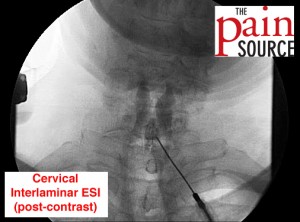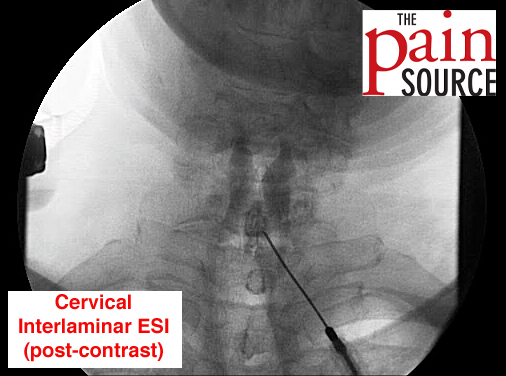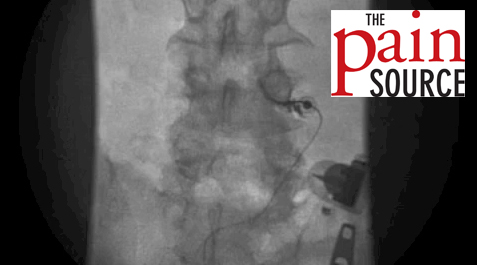By Chris Faubel, MD –

Am J Phys Med Rehabil. 2009 Mar;88(3):239-46
MRI prediction of therapeutic response to epidural steroid injection in patients with cervical radiculopathy.
Fish DE, Kobayashi HW, Chang TL, Pham Q.Department of Orthopaedics, Physical Medicine and Rehabilitation, David Geffen School of Medicine at UCLA, Los Angeles, California, USA.
Get the abstract here
Summary of Study
–
- Purpose: to find out if particular MRI finding can predict therapeutic success from cervical interlaminar epidural steroid injections (C-ILESIs) in patients with cervical radiculopathy
- Retrospective, single center study
- Study Participants
- Patients who received a C-ILESI at UCLA’s Comprehensive Spine Center between Aug 2002 and July 2004
- Pain level and functional status (using the Neck Disability Index) was filled out before the injection, and at a follow-up visit (and these were kept electronically)
- Inclusion criteria
- Symptomatic cervical radiculopathy
- MRI before the injection
- Failed conservative management
- Had C-ILESI performed
- Completed their self-assessment questionnaires (both before and at follow-up)
- Baseline characteristics
- Number of patients = 32
- Age = 53.2 (mean – ranged from 31-77)
- Follow-up period = 26.9 wks (mean)
- Methods
- Injection Technique
- Interlaminar approach at the C7-T1 level (regardless of the level of pathology)
- Catheter used to reach the level of pathology
- Injectionist was a single physician who was fellowship-trained in pain medicine
- Injectate: 80-mg methylprednisolone (Depo-Medrol) + 2-ml normal saline + 2-ml of 1% lidocaine
- MRI Analysis
- Single radiologist reviewed all the MRIs
- Four findings evaluated
- 1 – Disc herniation
- 2 – Nerve root compromise
- 3 – Neuroforaminal stenosis
- 4 – Central canal stenosis
- Severity of each finding was graded too
- Neck Disability Index (NDI) – the outcome measure
- Used to evaluate the functional status of the patient before and after the C-ILESI
- The greater the total score, the higher the disability.
- Injection Technique
- Results
- MRI characteristics
- Disk herniations = 26 patients
- Nerve root compromise = 19 patients
- Neuroforaminal stenosis = 21 patients
- Central canal stenosis = 14 patients
- Pre-injection NDI = 31.6 (mean)
- Post-injection NDI = 26.6 (mean)
- Only central canal stenosis was associated with statistically significant mean NDI benefit.
- Even when only “major” severity of the each MRI finding was used, central canal stenosis was still the only type associated with statistically significant outcomes
- This is important because mild MRI pathology in the cervical spine is common, yet likely not clinically significant, so this essentially eliminated those.
- Patients with central canal stenosis also has the worst pre-injection NDI scores (most pre-injection disability)
- MRI characteristics
- Conclusion
- MRI may play a role in predicting the benefial outcome of cervical interlaminar epidural steroid injection in patients with cervical radiculopathy (who have failed conservative management).
- Central canal stenosis predicted functional therapeutic benefit, especially when it is severe stenosis.
Future Research
- Evaluate whether the location of the pathology, duration of symptoms, or gender influences the outcomes.
- A much larger number of subjects should be used.
















